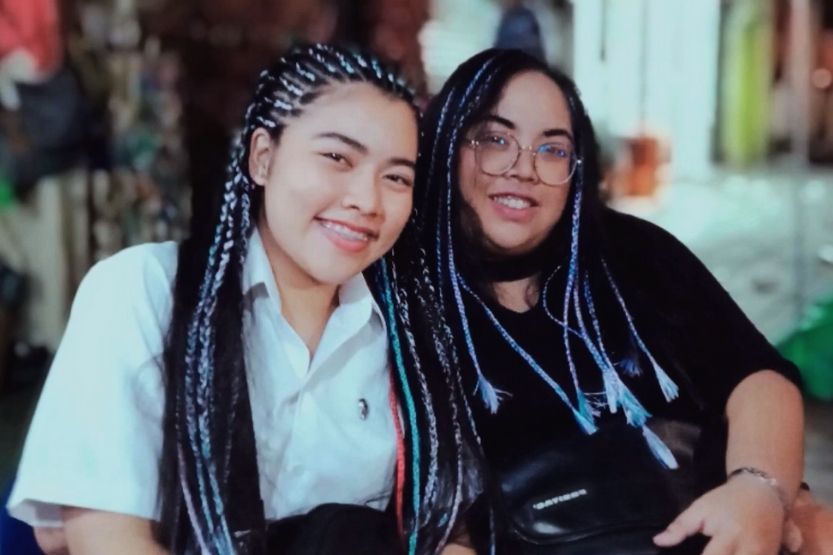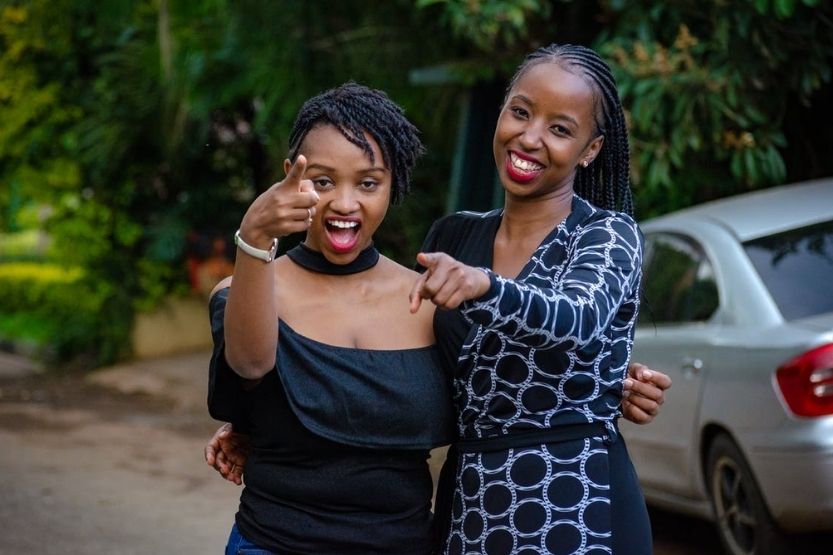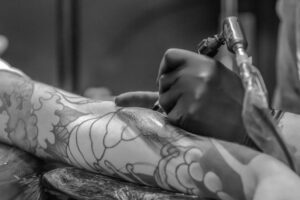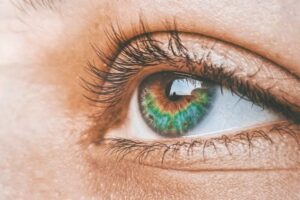If you’re not familiar with Thailand braids, it is a hairstyle that originated in Thailand and was popularized by celebrities like Kylie Jenner. Braids are a popular hairstyle that many people choose to wear from time to time to enhance their appearance. However, there are issues concerning who can wear braids. This article will focus on whether braids are a part of Thai culture or not.
Thailand braids are a unique form of hairstyle that has been around for generations. Boys in Thailand traditionally wore braids. Phom Pia, or Thai braids for males, is loosely translated as hair braids.
Thai braids for boys typically begin in the middle of the head or at the back and fall loosely towards the neck. Braids are still worn by many young women and girls in Thailand today.
Read on to know Thai braids’ history, its controversy, and more.
What Are Thailand Braids?

Thai women often wear Thailand braids. It can be done using natural or synthetic hair or a weave.
The traditional way of making Thai braids involves weaving the hair into cornrows before sewing it onto another section of hair from the scalp. This method can take up to four hours, depending on how long your hair is!
The most common type of Thai braid is “the three-strand braid” because it consists of three strands: one strand on top of two strands underneath or two strands on top of one strand underneath.
The modern version has changed significantly since its introduction centuries ago; however, it remains popular today due to its versatility and ease of application.
Are Braids Part of Thai Culture?
Significant Role of Hair in Rituals and Celebrations
Hair has played a substantial role in several rituals and celebrations in Thai culture. For example, cutting one’s hair on a Wednesday is bad luck in Thailand. Similarly, the traditional Thai braids have strong ties to many forms of superstition.
Hairstyles Believed to Ward Off Evil Spirits
Traditionally, Thai people believed that the hairstyles below ward off evil spirits from children:
- Go – the ponytail;
- Mud Chook – the modern version for the top knot; and
- Phom Pia – the braids.
Elders Styled Young Boys’ Hair
In Thailand, Phom Pia braids, which resemble box braids, are the most common. Phom Pia braids’ fascinating history includes elders frequently styling young boys’ hair instead of girls in ancient Thailand.
Essential Aspect of Thai Culture
This style has declined in popularity over the years, yet it is still an essential aspect of Thai culture. Today, most Phom Pia wearers are Thai women rather than young males, as was the case in the past.
Contrary to popular belief, many people still doubt whether or not braids are part of Thai culture. Women in Thailand have long, straight hair that has become a symbol of the country’s traditional beauty in the media. We can say that braids are less popular because of this.
But it’s still important to keep in mind that braids are a part of Thailand’s history, even though they’re not very prominent now.
Can You Have Curly Hair in Japanese Schools?
Phom Pia Braids vs. Box Braids – What’s the Difference?
No Extensions for Phom Pia Braids
Phom Pia is often mistaken for box braids by some people. The styles appear identical at first glance; however, they are not.
Phom Pia braids are entirely done on the wearer’s hair — no extensions are used. This feature is distinct from box braids, which typically involve braiding hair to add both length and longevity to the look.
Not Uniquely Thai
Also, Phom Pia braids aren’t uniquely Thai. These braids have been worn for centuries by people of African heritage and are still popular among them today.
Jamaicans are credited in history for being the ones who initially brought Phom Pia to Thailand in the 18th century. Phom Pia braids, unlike box braids, are only done on real hair and not on weaves or braids. In many box braids, hair is weaved into the braids to give it more depth.
Become Popular and Trendy in the United States
Even though the Phom Pia braid is a traditional hairstyle in Thailand, it has become very popular and trendy in the United States.
Thai Braids and Cultural Appropriation Issues
BLACKPINK’s Thai Artist Lisa
Braids have been the subject of some controversy in Thailand in recent years. In 2020, BLACKPINK’s Thai artist Lisa was publicly shamed for having braids in her hair.
Some people thought Lisa should not have worn braids, while others felt the controversy was created out of thin air. Apologies were made, and Lisa said she had learned a lot from experience.
Grace Karnklao
It’s not unusual for others to have similar experiences to Lisa’s. Grace Karnklao, a Thai celebrity, was also criticized in 2020 for wearing box braids while promoting her new music.
This stirred up some serious discussions concerning cultural appropriation, even though she apologized for her choice of hairstyle.
Not Everyone Is Aware of Cultural Appropriation
Because cultural appropriation isn’t something everyone is aware of or understands, it’s not a universal concept or sentiment.
When BLACKPINK’s Lisa received criticism, it was revealed that many people in various Asian countries were unaware of cultural appropriation and were slow to accept it.
Even if ignorance in and of itself isn’t a reason to offend others, it does complicate the conversation regarding cultural appropriation. People who engage in cultural appropriation are on the other end of the spectrum.
Cultural appropriation by those of Thai descent, especially involving braids and gold chains, including other stereotypical images of African-American fashion and hair trends, has been on the rise.
Consequently, people have become apprehensive of Thai people, including other non-Blacks wearing braids.
Braids and Their Cultural Context

Worn by People of Many Different Cultures and Ethnicities for Centuries
People from many different cultures and ethnicities have worn braids for centuries. However, this style is most commonly associated with African-American women.
Signify Different Things
Braids signify different things, depending on the person wearing them and the context they are worn.
Controversy Around Braids
There has been some controversy around braids being worn by non-black people in recent years. People who believe braids are only appropriate for black people argue that white people should not wear them because they do not understand their meaning or history.
On the other hand, others believe that braids are a hairstyle that anyone can wear regardless of race or ethnicity.
Consider How Your Hairstyle Fits Into Your Community and Culture
It’s important to consider how your hairstyle fits into your community and culture before deciding whether or not it’s appropriate for you to wear as an individual. Also, it’s important not to judge others for their personal choices about their appearance — even if those choices are different from yours.
So, Who Can Wear Braids?
You might be asking why it makes a difference where a certain braid style came from. Braided hairstyles, in particular, have a strong historical connection to the African diaspora.
And for this reason, when a culture is taken for granted or misrepresented by someone who has never experienced it, people get upset. Even so, it’s your hair, so do whatever you want with it. Just be aware that you can’t ensure that others won’t be upset by your actions.
But to avoid offending other cultures, try only wearing fashion styles that are directly related to your own culture. If you wear a braid style associated with another culture, you risk being accused of cultural appropriation.
No matter how well-intentioned you are, wearing hairstyles that aren’t associated with your own culture can be considered disrespectful by others who are a part of it. So it’s essential to understand why a person could be offended by your hairstyle decision.
Thailand Braids Culture Today
Even though there are conflicting views on whether braids are an integral part of Thai culture, you’ll still see Thai ladies sporting the Phom Pia hairdo and other braids from time to time. Once you know the difference between Thai and African braids, you can see which ones Thai ladies can wear.
However, as long as there are misinformed people about the cultural significance of braids in Thailand, people might still see Thai women wearing braids in a negative light.
Thailand braids are often made with brightly colored threads, which creates a powerful visual statement. You can have long and elaborate or short and simple braids. Hairdressers often braid hair into a spiral pattern and then wrapped them around the head.
Again, what are Thailand braids? Phom Pia braids, which look like box braids, are Thailand’s most popular braid style. Adults commonly did this hairstyle to boys in ancient Thailand.
Thailand’s Most Popular Hairstyles
Braids aren’t that common in Thailand, so alternative hairstyles have taken their place as the most fashionable. Thailand’s most popular hairstyles right now are as follows:
1. Straight and Smooth
It’s no wonder that smooth, straight hair is in style in Thailand because most Thai women already have straight hair. Longer hair equates to greater attractiveness in women.
Free-flowing hair with fringe bangs and face-framing highlights are two examples of smooth, straight style variations. This style works well with various face shapes as well.
2. Posh High Bun
Another popular Thai hairstyle is the high bun, a simple and low-maintenance hairdo popular among older Thai ladies. They use hair accessories for a more refined look.
The high bun has been popular with Thai women for years because it makes them look sophisticated without being too flashy or overdone. It works best on straight hair or hair with slight waves. Curly hair can be difficult to manage in this style because of its natural bounciness.
3. Fashion Hair Colors
Thailand has a rich history of fashion, and this is no more evident than in the variety of hairstyles and colors they’ve adopted over the years. You might not know it, but Thailand is home to some of the most vivid and daring hair colors.
From pastel purple to neon orange and everything in between, hairdressers create these colors using various techniques and products that you can find at their local beauty supply store.
Where to Get Braids in Thailand
Whether you’re a foreigner or local, you can try braiding your hair in the Land of Smiles. Generally, you can get Thai braids in a salon, stall, or request a home service.
Here’s a 5-minute vlog of a Black woman getting her natural hair braided in a Bangkok stall:
Hair Salon or Street Stalls
It’s not uncommon for men and women to work as hairdressers in Thailand. Most members of Thailand’s National Hairdresser Association like braiding their clients’ hair.
Therefore, finding a hair salon to help you braid your hair will be a breeze. If you want your hair done, you have to go to a salon. Some salons in Thailand allow customers to book appointments online.
Some Thai streets even have hairdressing stalls. They may not be as elegant or comfy, but their braids are just as high-quality as those in salons.
At-Home Services
It is possible to request home services rather than going to a salon or stall to have your hair braided. You can find hairdressers all over Thailand — on the country’s beaches and other tourist destinations.
However, keep in mind that braiding takes time, so it may not be practical to braid your hair in certain locations.
Frequently Asked Questions – Thailand Braids and Cultural Appropriation

Which Braids Are Cultural Appropriation?
Ghana braids or cornrows have become “box braids,” as seen on Kim Kardashian, including Fulani braids becoming “Bo braids,” dubbed after the 70s it-girl Bo Derek. They are destroying black hair culture by copying these looks and not giving credit to the original.
What Culture Started the Braids?
It’s the African culture. Braids dated 5,000 years to 3500 BC in African culture and were quite popular among women. A braided hairstyle is more than simply a fashion statement — it is a work of art. Braiding began in Africa with the Himba people of Namibia.
What Cultures Include Braids?
Africa, Europe, India, Central Asia, Australasia, China, and Japan have similar practice records. Braiding is a communal art form that dates back centuries ago.
People use braiding as a form of social interaction.
Are Box Braids a Cultural Thing?
Braiding one another’s hair became popular among the tribes’ mothers, who taught their young daughters the skill. People from the Khoisan indigenous peoples in South Africa and the Afar ethnic group from the horn of Africa also wear box braids.
Where Did Box Braids Originate From?
Box braids are a South African tradition that dates back to 3500 BC. It takes up to eight hours to make this style, then and now. Many people believed that a woman was wealthy if she could afford the time and money it took to do these braids.
What Is the History Behind Cornrows?
Enslaved Africans also wore cornrows in colonial America. The term “cornrows” was coined because the braids resembled rows of crops in a field. Canerows were a common name for this style in the Caribbean.
During the week, the enslaved wore their hair in cornrows, a quick and easy style.
Conclusion – Thai Braids Culture & Cultural Appropriation
Even though braids aren’t fashionable in Thailand now, it’s necessary to remember that Thais have worn them for a long time.
Another point to ponder is that although a traditional hairstyle isn’t as well-known as others, you should still respect it — this is especially true regarding the Thai Phom Pia braids.
No matter where you come from, try to be as open and accepting of other people’s cultures as possible while expressing yourself. I hope that this article has provided you with a better understanding of Thai hairstyles and the controversial issues.
Read next:


![Read more about the article Is Dove Shampoo Good for Your Hair? [Dove Review]](https://howchimp.com/wp-content/uploads/2022/05/is-Dove-shampoo-good-for-your-hair-300x200.jpg)

